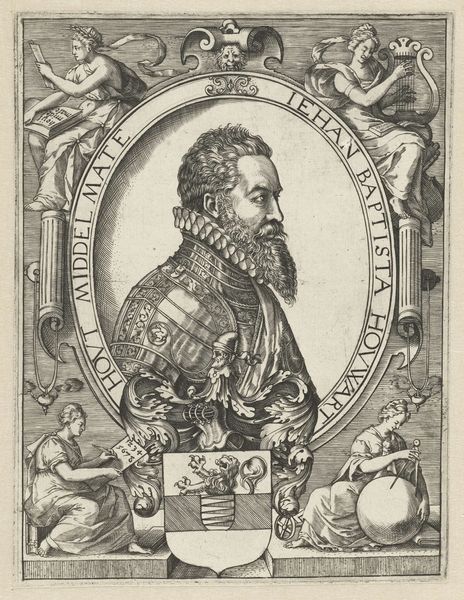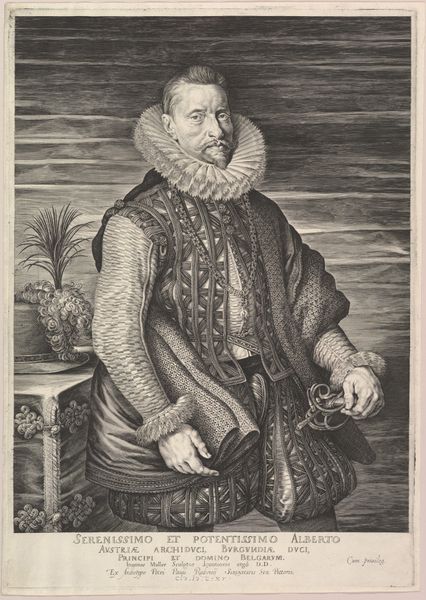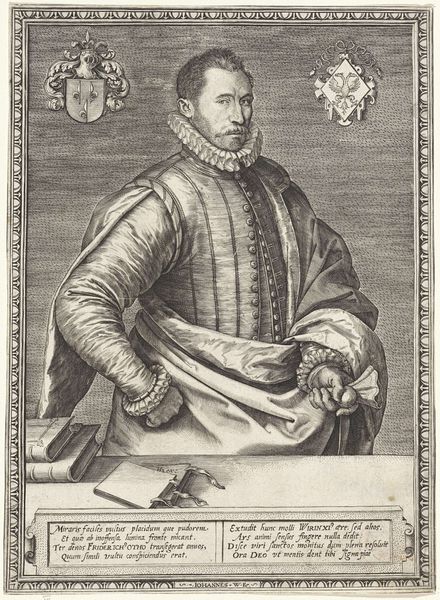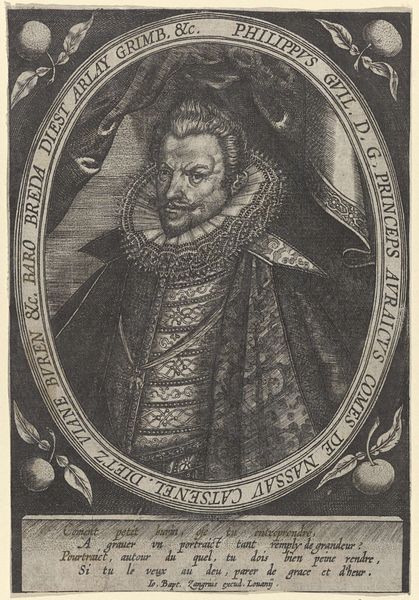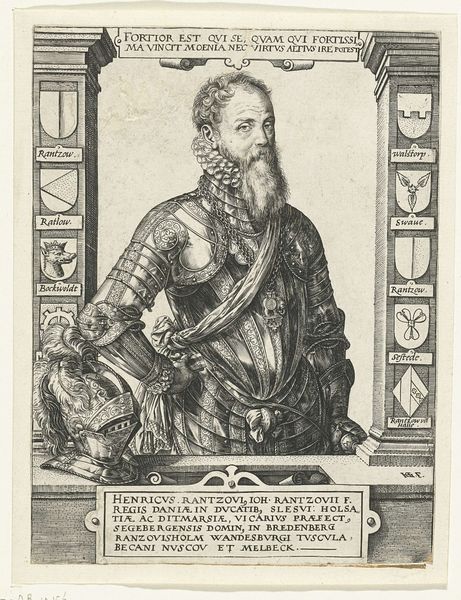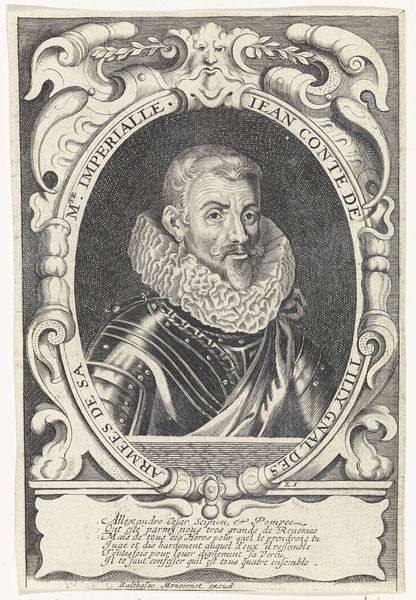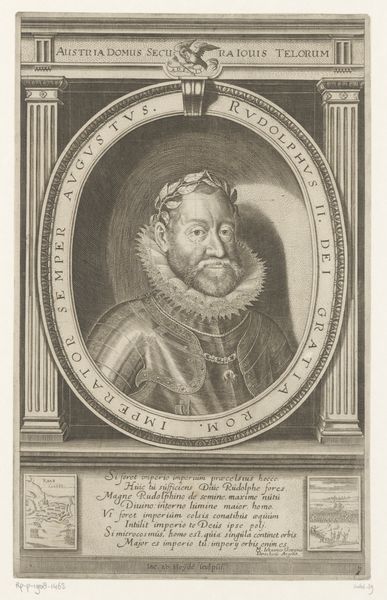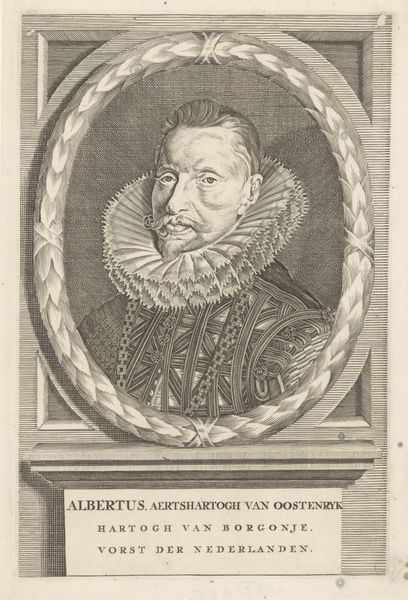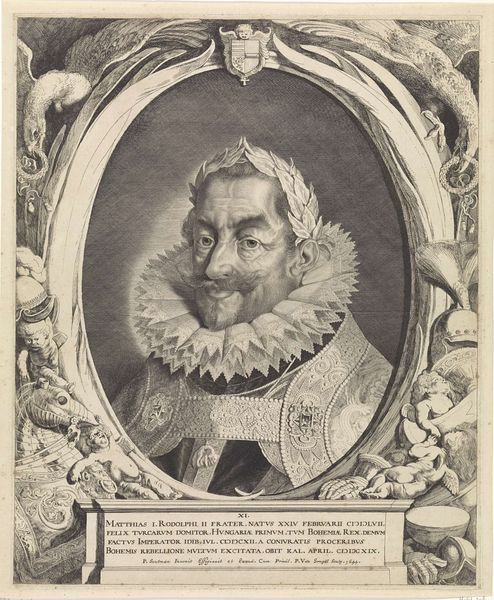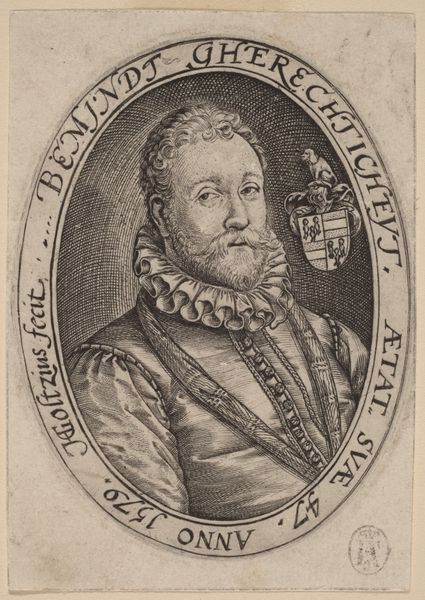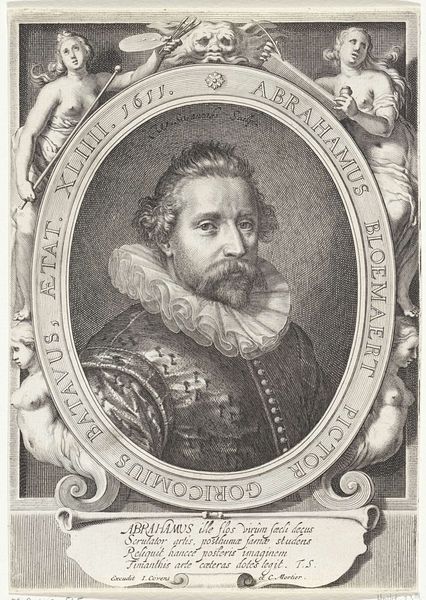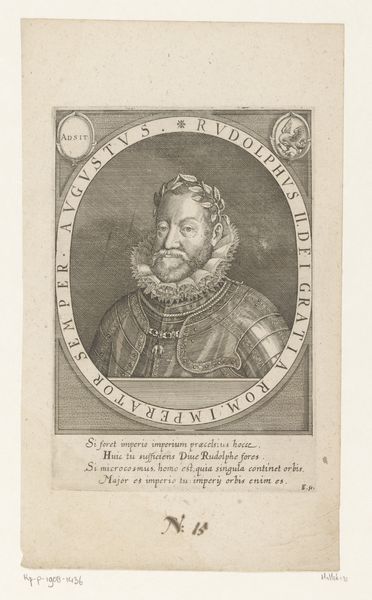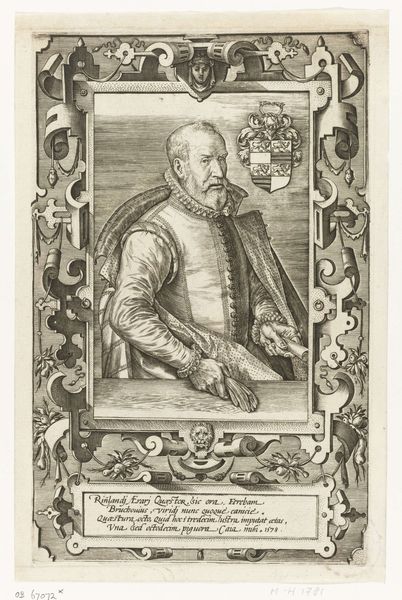
print, engraving
#
portrait
# print
#
caricature
#
mannerism
#
figuration
#
history-painting
#
engraving
Dimensions: height 199 mm, width 132 mm
Copyright: Rijks Museum: Open Domain
Hendrick Goltzius rendered this engraving, Portrait of Jacques de la Faille, in the late 16th century. Here, we see symbols of military prowess—armor, swords, and cannons—which speak to de la Faille’s identity as a leader and warrior. Consider the motif of the sword, a symbol of power and justice. From ancient Roman gladii to medieval knights’ blades, the sword has always represented authority and defense. Think of the archangel Michael, often depicted with a sword, symbolizing the fight against evil. Yet, the sword also carries a psychological weight, embodying both protection and the potential for violence. Notice the helmet held by de la Faille. It reminds us of the transience of glory. Just as a helmet protects, it also conceals, suggesting themes of identity and the masks we wear. This contrast engages us on a subconscious level, evoking a sense of awe. These symbols, like echoes in a grand hall, resurface, evolve, and take on new meanings, forever connecting us to the past.
Comments
minneapolisinstituteofart almost 2 years ago
⋮
Wealthy Dutch merchants eagerly paid to have their status immortalized by eminent artists like Hendrick Goltzius. Jacques de la Faille commissioned these portraits (see P.80.31.2) the year he married Josina Hamels. Instead of using his portrait to proclaim his business acumen, however, he presented himself in his role as a commander of the Antwerp civic militia. Weaponry fills the lower region while a drummer and halberdier command the upper margin.
Join the conversation
Join millions of artists and users on Artera today and experience the ultimate creative platform.
